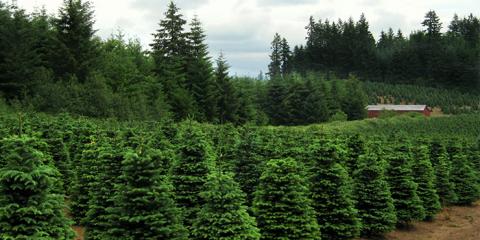Why do we have Christmas Trees in our houses?
December 20, 2013
Long before the advent of Christianity, evergreen trees had a special meaning for people in the winter. Ancient peoples hung evergreen boughs over their doors and windows. In the Northern Hemisphere, the shortest day and longest night of the year falls on Dec. 21 or Dec. 22 and is called the winter solstice. Many ancient people believed that the sun was a god and that winter came every year because the sun god had become sick and weak. They celebrated the solstice because it meant that at last the sun god would begin to get well. Evergreen boughs reminded them of all the green plants that would grow again when the sun god was strong and summer would return (a little more history here).
Germany is credited with starting the Christmas tree tradition as we now know it in the 16th century when devout Christians brought decorated trees into their homes. Legend has it that Martin Luther, the 16th-century Protestant reformer, first added lighted candles to a tree. Walking toward his home one winter evening, composing a sermon, he was awed by the brilliance of stars twinkling amid evergreens. To recapture the scene for his family, he erected a tree in the main room and wired its branches with lighted candles. (Don’t try this at home, boys and girls!)
It is not surprising that, like many other festive Christmas customs, the tree was adopted late in America. To the New England Puritans, Christmas was sacred and they tried hard to stamp out "pagan mockery" of the observance, penalizing any frivolity.
By the 1890s Christmas ornaments were arriving from Germany, and Christmas tree popularity was on the rise around the U.S. Americans decorated their trees with homemade ornaments, apples, nuts and popcorn strung with cranberries and nuts. Electricity brought about Christmas lights. Edward Johnson, Thomas Edison’s assistant invented Christmas tree lights in 1882, making it possible for Christmas trees to glow for days on end. With this, Christmas trees began to appear in town squares across the country, and having a Christmas tree in the home became an American tradition.
The first American Christmas tree farm was reportedly started in 1901 when W.V. McGalliard planted 25,000 Norway spruce on his farm in New Jersey. Also in 1901, Theodore Roosevelt tried to stop the practice of having Christmas trees out of concern about the destruction of forests. His two sons didn’t agree and enlisted the help of conservationist Gifford Pinchot to persuade the president that, done properly, the practice was not harmful to the forests (http://www.realchristmastrees.org/dnn/Education/HistoryofChristmasTrees.aspx).
Oregon Christmas tree growing pioneers like Barney Douglas and Hal Schudel developed the sheared Douglas-fir in the 1950s. This became the mainstay of the Oregon Christmas tree industry. Today Douglas-fir is still the favored variety at 47 percent; noble fir, 45 percent; grand fir, 5 percent; all the rest account for 3 percent.
Oregon produces more Christmas trees than any other state. The Pacific Northwest Christmas Tree Association (http://www.pnwcta.org/news-events/facts-at-a-glance/) estimates that 6.4 million trees will be harvested in Oregon this year. North Carolina (3.5 million) and Michigan (3 million) are in second and third place, respectively. Oregon has about 63,000 acres of Christmas tree farms out of an estimated 1 million acres nationally. Oregon counties with the greatest production are Benton, Clackamas, Marion, Polk and Yamhill.
So enjoy your Christmas, your tree, your evergreen boughs and your starlit walks through the woods, and be thankful that the sun is recovering and the days are starting to get longer.
For the forest,
Mike Cloughesy,
Director of Forestry
